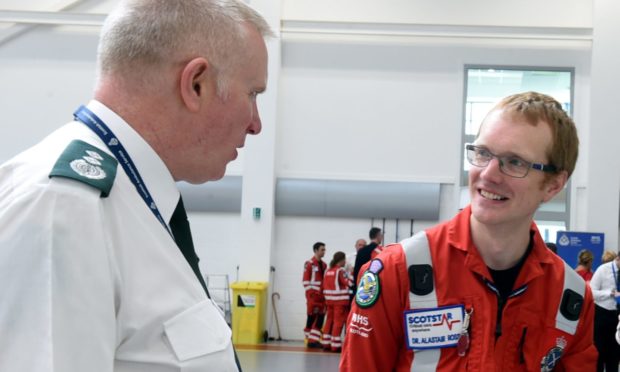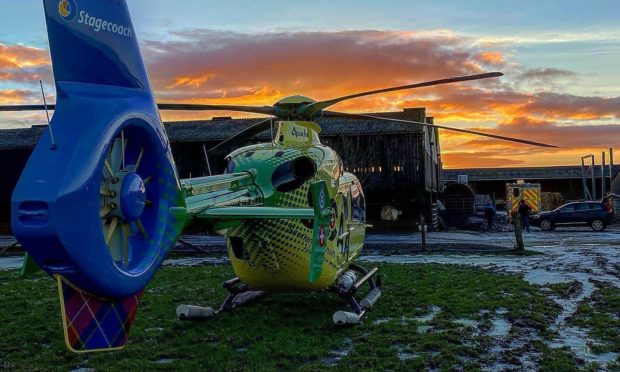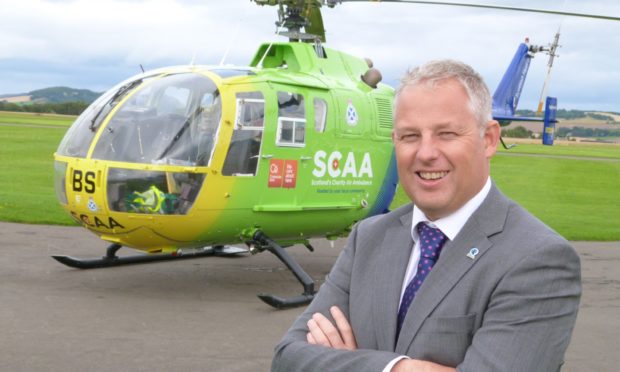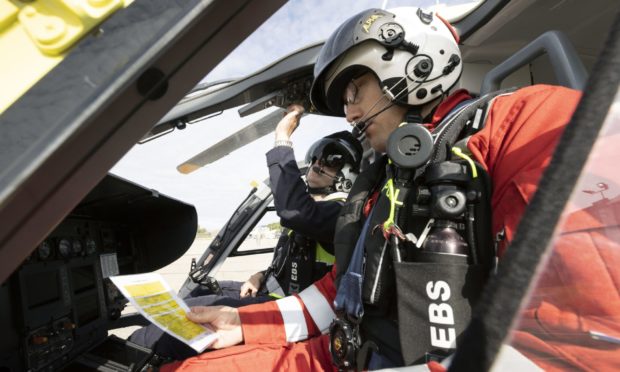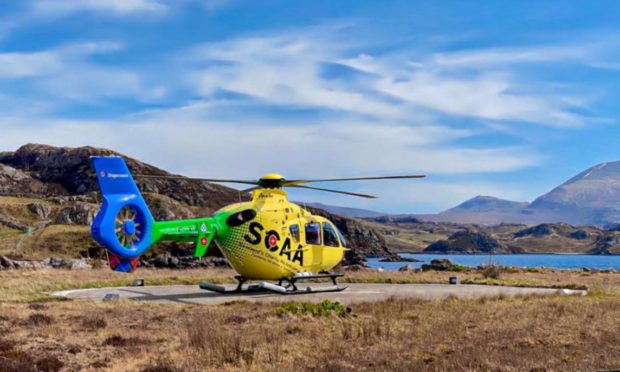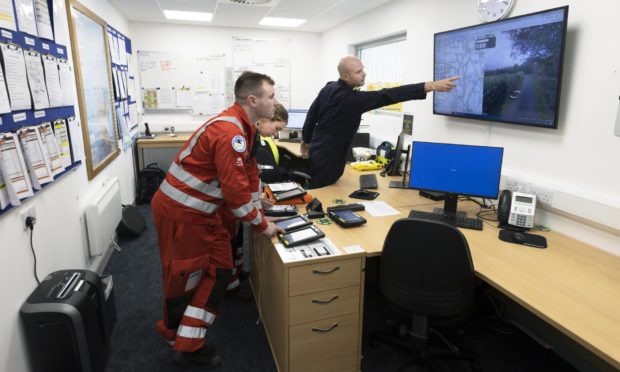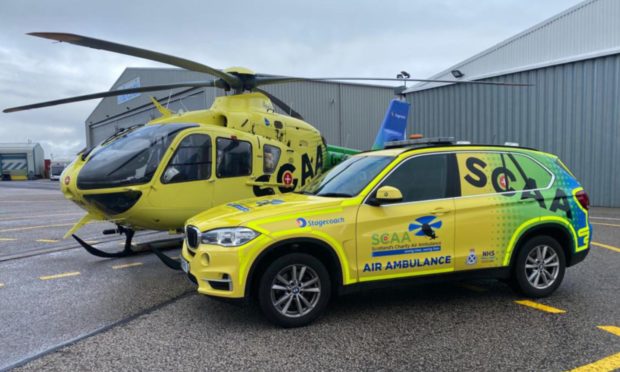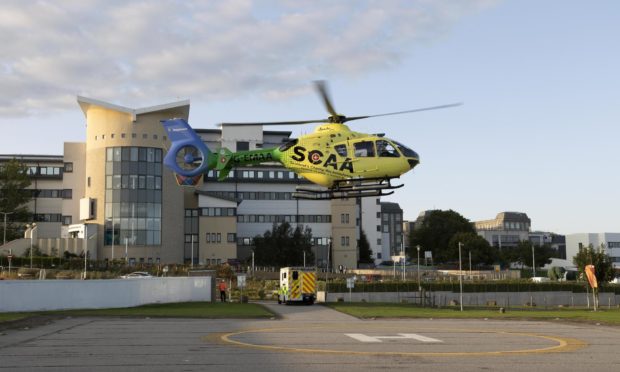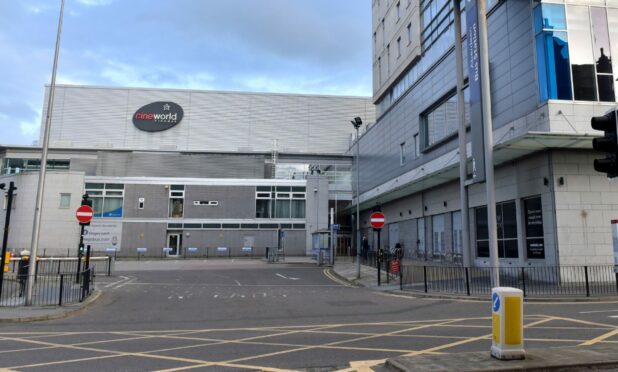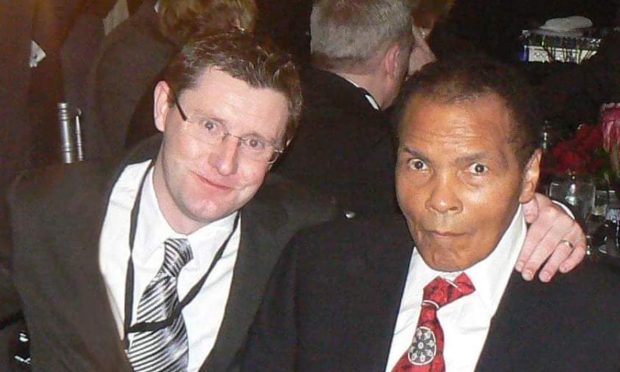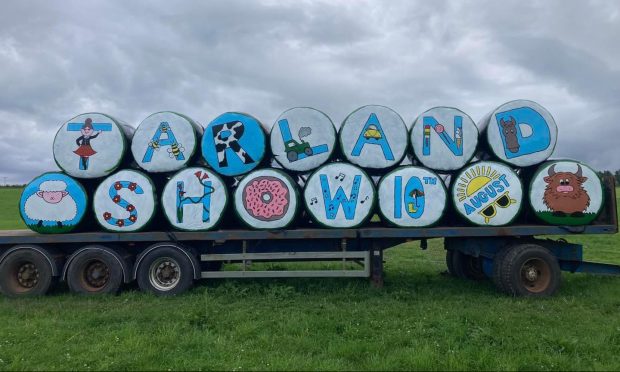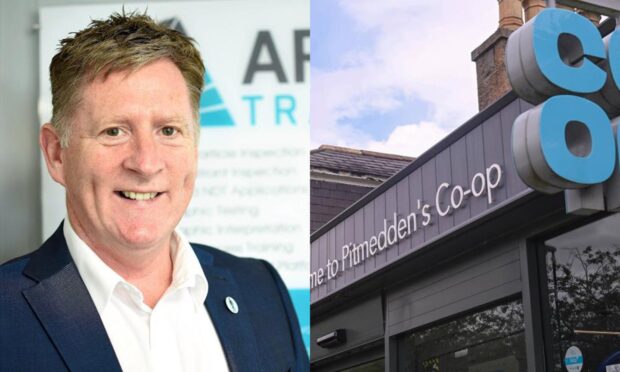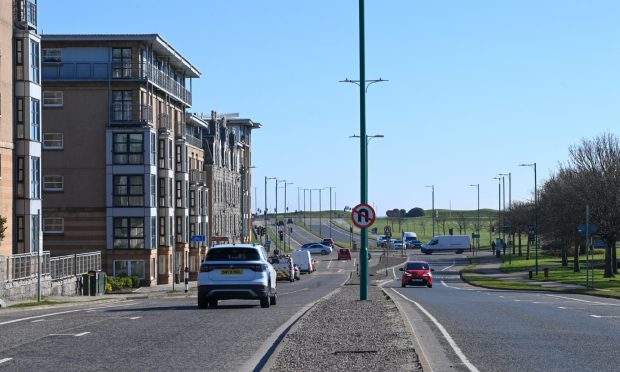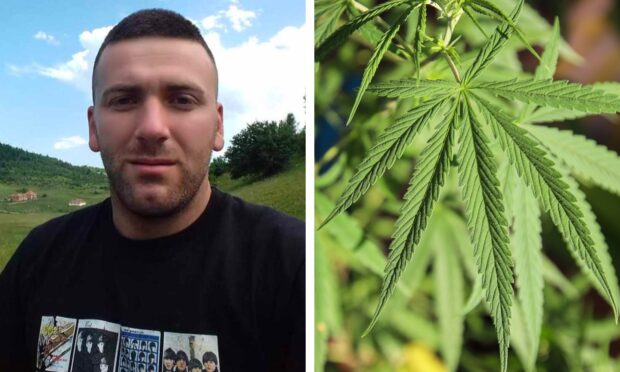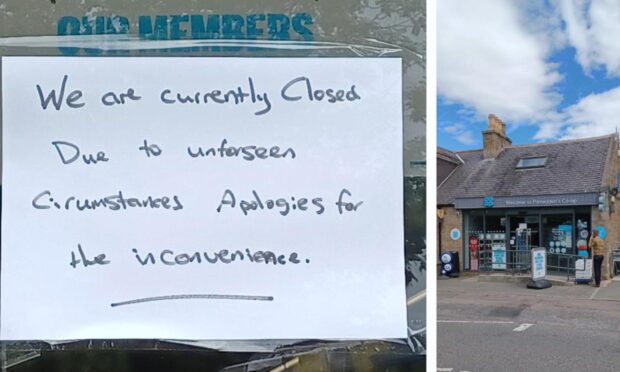Since the launch of the Scottish Charity Air Ambulance (Scaa) in Aberdeen one year ago, more patients have “undoubtedly” had better chances for full recovery.
And while the Helimed 79 copter is fully staffed with paramedics for each call-out, it is often joined by a pair of additional experts to help in the most urgent emergencies.
Just 30 seconds away from Scaa’s hangar in Dyce, the Scotstar (Scottish Specialist Transport and Retrieval) North team is on hand to spring to the aid of critically-ill patients.
Its £1 million base opened in 2019 to look after adults who have been brought to the city via aircraft in life-threatening conditions before they are transferred to hospital.
But its 12-strong team of consultants has also been taking to the skies to provide additional support where needed.
With backgrounds in anaesthetics, emergency medicine or intensive care medicine, the team is able to provide high-level “red interventions” not usually found outside of A&E to help save lives.
These can include giving blood transfusions or giving the patient a general anaesthetic.
Over the course of Scaa’s first year, 76 of its 196 emergency calls involved transporting the Scotstar staff.
‘No doubt’ work is challenging
Clinical lead Alastair Ross said: “It is really important we have this opportunity to work with the guys at Scaa.
“Up until Helimed 79 went live, we still had access to the fixed wing plane and response car, but they’re not really practical for going to a roadside rescue, and more for airport-to-airport work.
“It’s tremendously useful for moving patients between hospitals but, for the primary work, having access to the rotary asset is hugely beneficial for getting to the patient’s side and expanding the reach of where we can get to quickly.”
Dr Ross’s team makes up the north component of the EMRS (emergency medical retrieval service) which operates across Scotland.
It also has two teams in the west of the country and one in Glasgow.
The organisation is part of the Scottish trauma network, which links four key hospitals in Aberdeen, Dundee, Edinburgh and Glasgow.
Dr Ross said: “Obviously there’s a helicopter in Inverness and Glasgow, and let’s not forget Helimed 76 in Perth.
“Prior to 79 going live there would have been options to travel with them, and there still is.
“But the fact they’re not based close by means there’s a time concern.
“Having 79 right beside us, if we need to get somewhere quickly we can go and work with the team.
“If we have the EMRS team and the Scaa paramedics there, we can work together and deliver more effective care for the north of Scotland.”
He added: “These are interventions which would normally be done within the safety of a hospital and there’s no doubt it can be a challenge.
“You don’t know where you’re going to end up working so it adds that additional factor when you’re in a remote location.
“I would rather be in the emergency department with a really sick patient than in the dark on a roadside.
“But we train, so everyone knows what part each has to play and we work together to get it done safely to the highest standards.
“We’ve being able to deliver these really urgent interventions that would normally have to wait until A&E.”
View from the hospital
Roland Armes, an emergency medicine consultant at Aberdeen Royal Infirmary and Royal Aberdeen Children’s Hospital, is often involved in treating patients who arrive via Helimed 79.
He said there is no question the aircraft has helped to give patients a better chance of recovery if they are injured or fall ill.
“Having Scaa is another means of getting an ambulance resource to somebody who is unwell or injured, and obviously they can fly quicker than an ambulance can drive on roads,” he said.
“They can take paramedic-delivered care to somebody more quickly, particularly in the further flung parts of the area.
“And if the decision is made to fly them back, the return journey is significantly faster than by road.”
He added: “What EMRS does is take many of the things we can do in the resus room to the roadside.
“If you’re injured, say, 60 miles away from Aberdeen, then historically you would have faced waiting for an ambulance to arrive,
“The crew would then do their best with you and relay you to us. Now these interventions can be taken to you.”
Alongside injuries from falls or crashes in remote parts, Helimed 79 can also help those with medical matters such as heart attacks, strokes or sepsis.
Dr Armes added: “There are undoubtedly patients who have had a better outcome because they’ve been able to be conveyed more quickly because of the air asset and the involvement of Scaa.”
Scotland’s Charity Air Ambulance has made a huge impact since 2013, saving lives and preventing suffering.
That is why the P&J campaigned successfully for Scaa’s second helicopter to be based in our region.
It has now been a year since the aircraft – call sign Helimed 79 – started flying missions from Aberdeen Airport.
But this is an emergency service that relies entirely on donations.
Each call-out costs about £2,500 and SCAA needs P&J readers to help hit its £6million target to cover the cost of its first three years operating in the north-east.
So please do anything you can to raise those funds and show that We’re Backing Helimed 79.
Ways to donate to SCAA
- Website: www.scaa.org.uk/donate
- Text: Text ‘SCAA’ and the amount to 70085
- Phone: 03001231111
- Cheques: Made payable to ‘SCAA’ or ‘Scotland’s Charity Air Ambulance’ and sent to: Scotland’s Charity Air Ambulance (SCAA), The Control Tower, Perth Airport, Scone, PH2 6PL
